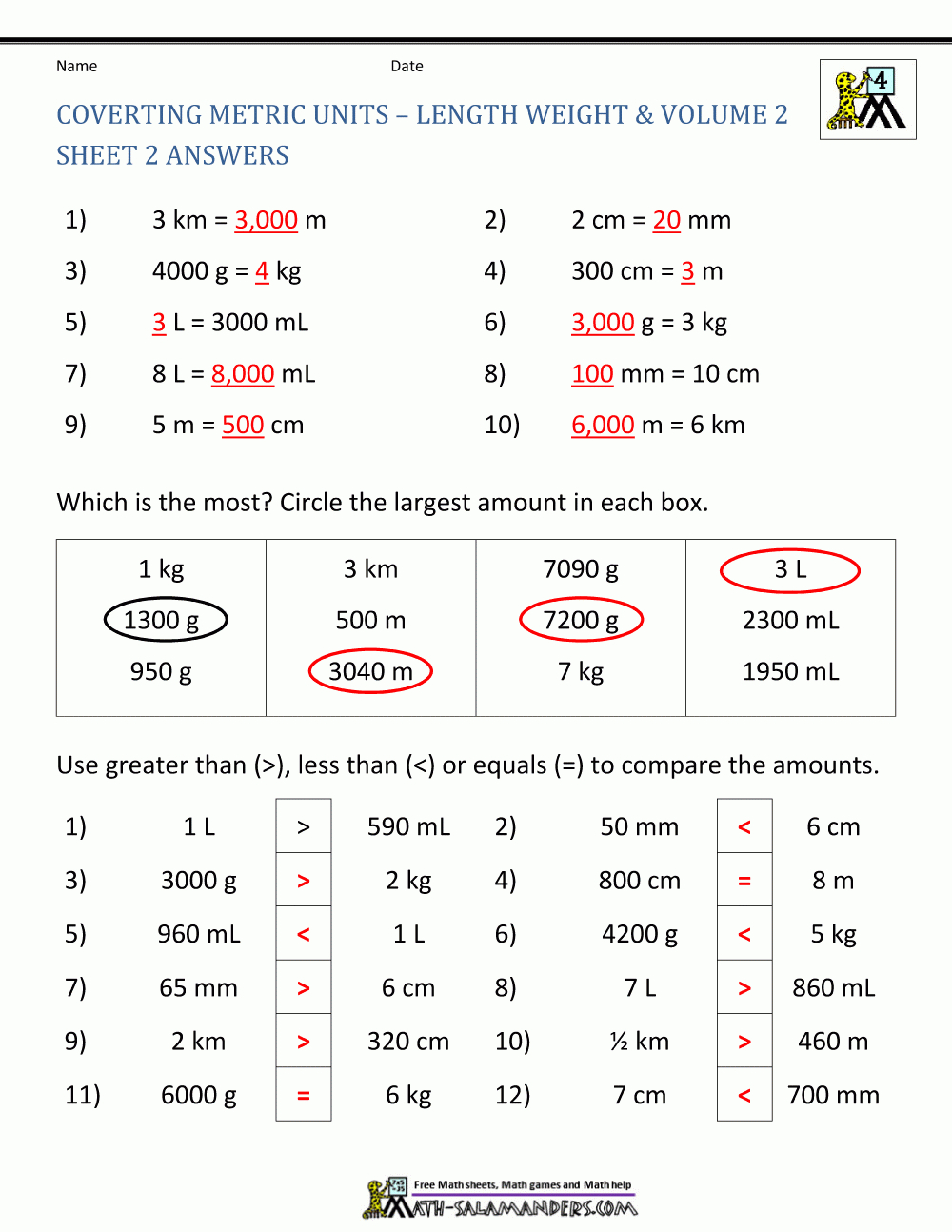Master Measurement Conversions with Our Free Worksheet

Mastering the art of measurement conversions is a valuable skill in many walks of life, from cooking to scientific research. Whether you're measuring ingredients for a new recipe, calculating distances for travel, or interpreting data in different units, having a solid grasp on how to convert between various measurement units can save time, prevent errors, and enhance understanding. Here’s a comprehensive guide to help you master measurement conversions, complete with practical tools and tips for everyday use.
Understanding the Basics of Measurement Systems


Before diving into conversion methods, it’s crucial to understand the two main systems of measurement used globally:
- Metric System (SI): Widely used worldwide, based on the International System of Units. Includes units like meters for length, liters for volume, and grams for mass.
- Imperial System: Primarily used in the United States, with units like feet for length, pints for volume, and pounds for weight.
The Key Units of Measurement

| Type | Metric Unit | Imperial Unit |
|---|---|---|
| Length | meter (m) | foot (ft) |
| Mass/Weight | gram (g) | ounce (oz) |
| Volume | liter (L) | gallon (gal) |

Conversion Techniques

Converting between units in the same system is straightforward, but how do you manage conversions between different systems?
Metric to Imperial Conversions

- Length: 1 meter ≈ 3.2808 feet
- Volume: 1 liter ≈ 0.264172 gallons
- Mass: 1 gram ≈ 0.035274 ounces
To convert, multiply or divide by the conversion factor. For example, to convert 5 meters to feet:
5 meters x 3.2808 ft/meter = 16.404 feet
Imperial to Metric Conversions

- Length: 1 foot ≈ 0.3048 meters
- Volume: 1 gallon ≈ 3.78541 liters
- Mass: 1 ounce ≈ 28.3495 grams
🔧 Note: When dealing with very large or very small numbers, scientific notation or a calculator might be necessary for accurate results.
Common Measurement Conversions

Here are some handy conversions for everyday use:
- 1 inch = 2.54 centimeters
- 1 tablespoon (tbsp) ≈ 14.7868 milliliters
- 1 pound (lb) = 16 ounces ≈ 453.592 grams
Practical Tips for Conversion Mastery

- Know the Conversion Factors: Memorize common conversion factors for daily use.
- Use Online Converters: Websites or apps can provide quick conversions when you need them.
- Conversion Charts and Worksheets: These are excellent tools for practice.
🔧 Note: Always double-check your conversions, especially when precision is important.
Putting It Into Practice: Free Measurement Conversion Worksheet


To help you practice, here is a link to a free measurement conversion worksheet that you can download and use for self-study or classroom learning:
This worksheet covers:
- Length conversions
- Volume conversions
- Mass conversions
- Mixed units problems
To make use of this worksheet:
- Download the PDF file.
- Print it out or use it digitally.
- Work through the problems, checking your answers with the provided key.
🔧 Note: This worksheet is suitable for both metric and imperial systems, giving you well-rounded practice.
By practicing regularly with tools like this, you can develop a keen sense for conversions, making you more proficient and confident in handling various units of measurement. This skill is not only useful in academic settings but also in everyday life, where understanding the weight, volume, or distance in different units can make a significant difference.
In summary, becoming adept at measurement conversions involves:
- Understanding the fundamentals of both metric and imperial systems.
- Memorizing key conversion factors.
- Using practical tools like worksheets for practice.
- Applying knowledge to real-world scenarios.
Keep practicing, and soon, you'll find that converting measurements becomes second nature, opening up new avenues in your cooking, travel, academic pursuits, or any other field requiring a precise understanding of measurements.
What is the easiest way to memorize conversion factors?

+
The easiest way to memorize conversion factors is through repetition and practical use. Flashcards or creating mnemonic devices for common conversions can also help.
Why are there two different systems of measurement?

+
The metric system was developed for consistency and simplicity, while the imperial system evolved from a combination of historical measurements. The U.S. has continued to use the imperial system primarily due to cultural and infrastructural reasons.
Can conversion errors affect my recipes?

+
Yes, incorrect conversions can significantly alter the outcome of recipes, especially baking where precision matters. Always double-check your measurements before beginning.
Are there any smartphone apps for quick conversions?

+
Yes, there are numerous free and paid apps that offer quick and accurate unit conversions. Popular ones include “Unit Converter Ultimate” or “Convert Units Plus.”



